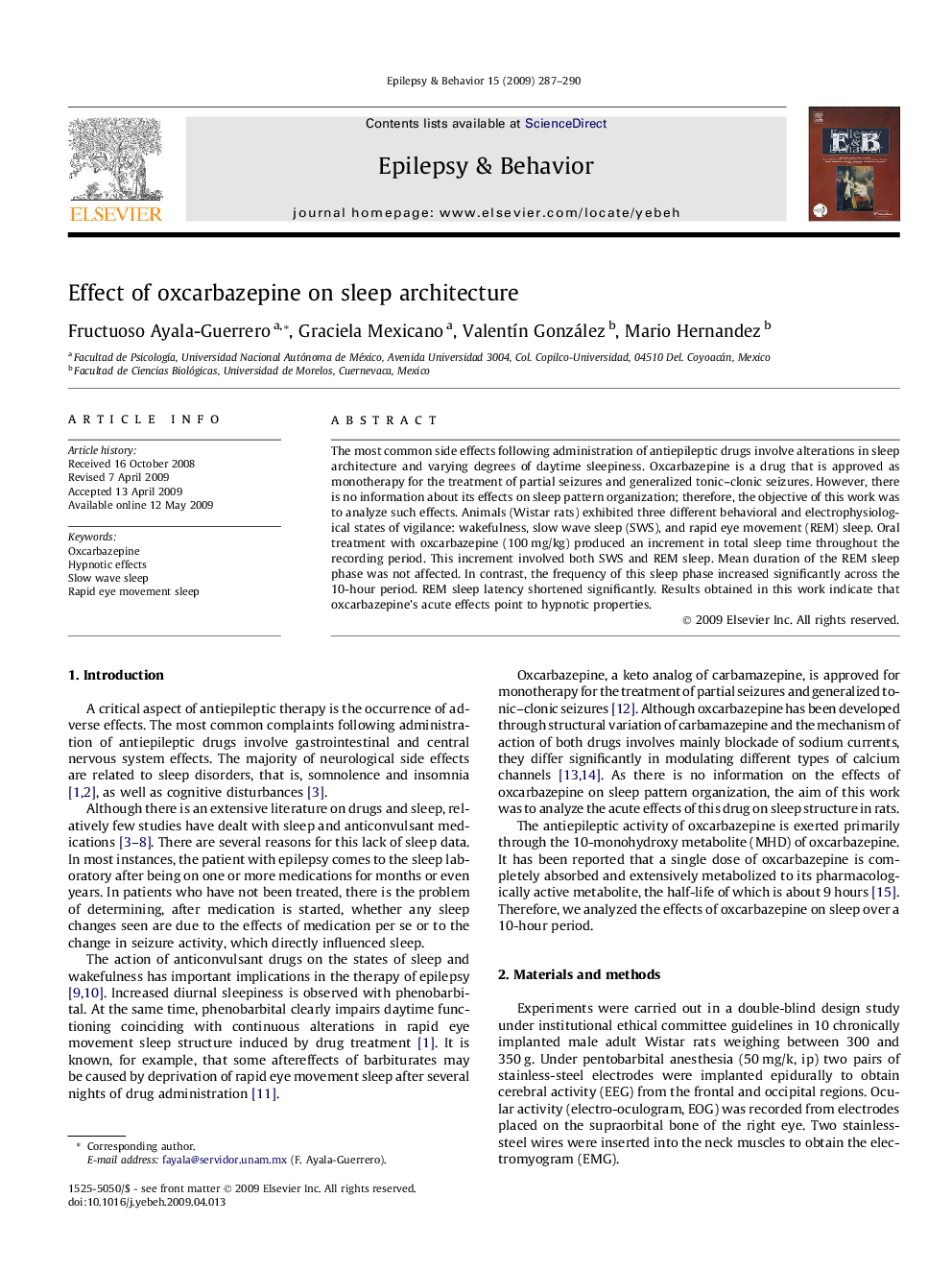| Article ID | Journal | Published Year | Pages | File Type |
|---|---|---|---|---|
| 3051070 | Epilepsy & Behavior | 2009 | 4 Pages |
The most common side effects following administration of antiepileptic drugs involve alterations in sleep architecture and varying degrees of daytime sleepiness. Oxcarbazepine is a drug that is approved as monotherapy for the treatment of partial seizures and generalized tonic–clonic seizures. However, there is no information about its effects on sleep pattern organization; therefore, the objective of this work was to analyze such effects. Animals (Wistar rats) exhibited three different behavioral and electrophysiological states of vigilance: wakefulness, slow wave sleep (SWS), and rapid eye movement (REM) sleep. Oral treatment with oxcarbazepine (100 mg/kg) produced an increment in total sleep time throughout the recording period. This increment involved both SWS and REM sleep. Mean duration of the REM sleep phase was not affected. In contrast, the frequency of this sleep phase increased significantly across the 10-hour period. REM sleep latency shortened significantly. Results obtained in this work indicate that oxcarbazepine’s acute effects point to hypnotic properties.
